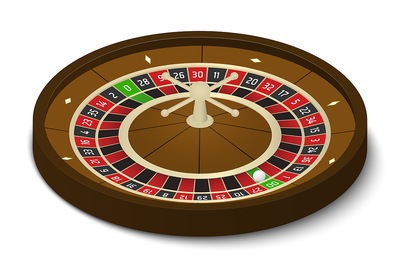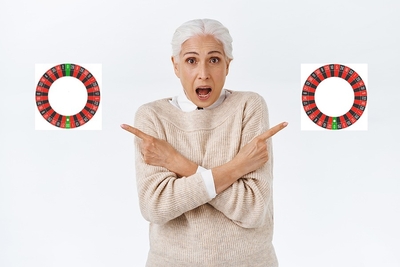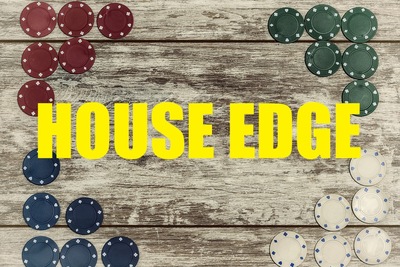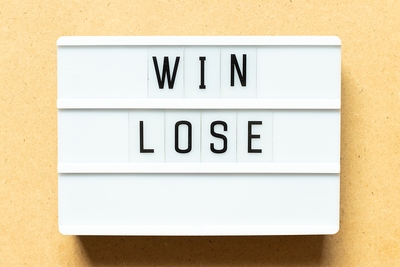 As a generalisation and certainly traditionally speaking, players in the UK and Europe will be accustomed to a roulette wheel with 37 sections: numbers one to thirty six and a single, green zero.
As a generalisation and certainly traditionally speaking, players in the UK and Europe will be accustomed to a roulette wheel with 37 sections: numbers one to thirty six and a single, green zero.
Players from North America and other US-leaning regions will typically find a wheel with the same 36 red and black numbers but with two green sections, a zero and a double zero, so 38 possible options for the ball in total.
With online casinos offering a whole host of different roulette variations these days, it is typical to find both types of game available. But which is best for the player: “European” (also sometimes called “French”) roulette, with a single zero, or “American”, with double zeros? We’ll give you the full lowdown here and, for those who like to look into the maths behind the game a little more closely, we’ll also explain what impact the extra zero has on the overall house edge.
Should I Play Single Zero Or Double Zero Roulette?
 There is a very simple answer to this question, assuming you want to win money or at least give yourself the best chance of not losing; always play at a single zero European roulette table ahead of one with both the standard zero and a double zero.
There is a very simple answer to this question, assuming you want to win money or at least give yourself the best chance of not losing; always play at a single zero European roulette table ahead of one with both the standard zero and a double zero.
Assuming both are normal wheels with no unusual rules or extras, the wheel with just the standard, single zero is by far the better option. Quite simply, this is a no-brainer, and the single zero wheel is the undisputed better option.
Having said it is a no-brainer, let us briefly use our brains to consider why you should always be playing your roulette on the European tables. It might seem that an extra zero, if it is of any significance at all, would not make much difference. From one point of view it does make relatively little difference.
A player betting 1,000 spins on red for £5 a pop would expect, on average, to have a slightly better outcome at the single zero table. However, given they are, in theory at least, risking £5,000, it would be hard to say that it would make a huge difference.
However, to counter that, we would say two things. Firstly, in terms of the house edge you are giving up to the casino, it is a big increase from a proportional perspective. Second, given there is literally no benefit to playing American roulette (all other things being equal, as said), why would you give any extra margin to the house, even if you decide it is so small as to be almost insignificant?
What Is The House Edge On Single Zero And Double Zero Roulette?
 The house edge is the casino’s margin and the higher it is, the more a player can expect to lose on average. The house edge is expressed as a percentage and shows what proportion of their stake a player will typically lose in the long term. In roulette the house edge is the same on all bets you make, with one exception. That means that whether you bet on a single number, a split of two numbers or red/black, you can expect to have a similar outcome.
The house edge is the casino’s margin and the higher it is, the more a player can expect to lose on average. The house edge is expressed as a percentage and shows what proportion of their stake a player will typically lose in the long term. In roulette the house edge is the same on all bets you make, with one exception. That means that whether you bet on a single number, a split of two numbers or red/black, you can expect to have a similar outcome.
The variance will be different, so if you only place a small number of bets you may see very different results but in the long term, maths and computer simulations of millions of spins show that it makes no odds whatever you bet on. The house edge remains the same and your expected losses remain the same. So, what are the house edges on these two main variants of roulette?
- European roulette, single zero: House Edge = 2.70%
- American roulette, double zero: House Edge = 5.26%
The only bet where you will find a different house edge, and what we have to view as the worst roulette bet going, has a whopping advantage to the casino of 7.90%. This is only applicable on double zero tables and is a wager on the “top line” or “basket”. This option is a winner if the ball comes to rest on 0, 00, 1, 2 or 3 and pays out at 6/1.
The equivalent top line bet on a European table is of course on 0, 1, 2 or 3 and this pays out at the considerably longer odds of 8/1 and, like all bets on a European table, carries a house edge of just 2.70%.
Why Is The House Edge Different?
 The reason why the house edge is different between single and double zero roulette may be rather obvious to many and the clue is, well, pretty much in what we have just said. With American wheels, players have an extra possible outcome to contend with, essentially an extra chance to lose.
The reason why the house edge is different between single and double zero roulette may be rather obvious to many and the clue is, well, pretty much in what we have just said. With American wheels, players have an extra possible outcome to contend with, essentially an extra chance to lose.
Aside from bets on the top line/basket, the odds for all bets on both types of wheel are the same. The top line is different because whilst the odds differ, the bet also changes, with American roulette offering five winning slots at 6/1 compared to four at 8/1.
With all the other bets you are backing the same options and getting the same odds on both tables, which may initially seem fair. Backing a single number on either an American or European wheel offers one winning outcome and odds of 36/1. Equally odds (or evens, or red, or black, or high, or low) gives you 18 winning options and pays out at evens.
But whilst the odds and outcome needed do not alter, that pesky extra 00 means that on the American wheel you have, as said, one extra chance to lose. That extra section, the double zero, equates for the additional 2.56% of house edge.
Anyone unwise enough to play American roulette who bets on a single number has a one in 38 chance of winning. That is the same whether they put their chips on 00, 7, 36 or any number in between. A sage casino expert playing European roulette who backs the same single number has a one in 37 chance of winning. They will both get paid out at the same odds but the player who eschews the double zero wheel is more likely to win. And that is as simple as it gets: the same odds but more chance of winning equates to a lower house at single zero roulette.
